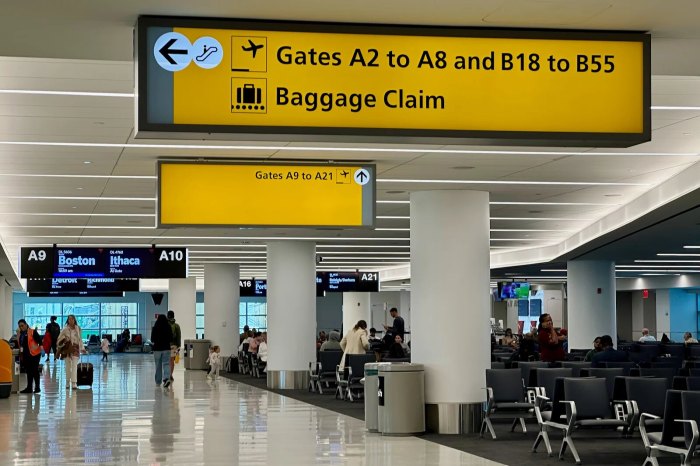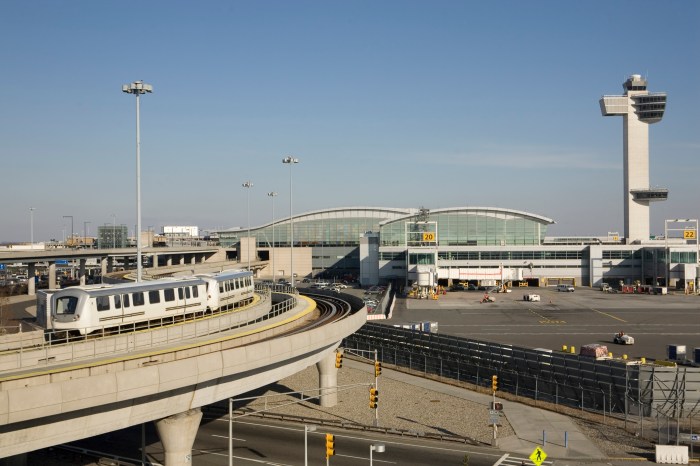By Gabriel Rom
A Queens city councilman has introduced a resolution that would allow city residents to pay a subway-equivalent $2.75 fare on the Long Island Rail Road or Metro-North within city limits and transfer to the subway or bus for free.
That resolution was introduced at last week’s City Council Transportation Committee hearing. Two other proposed amendments to the city charter would require the DOT and MTA to carry out studies on the viability of transit improvements such as light-rail systems and increasing passenger service on freight-rail lines.
According to Transportation Committee Chairman Ydanis Rodriguez (D-Manhattan) despite being invited, the MTA refused to send a representative to the hearing.
That absence set the tone for the hearing in which a number of Queens lawmakers voiced frustration both with the city and the MTA over a perceived lack of action on neighborhoods identified as “transit deserts.”
According to Councilman Daneek Miller (D-St. Albans), who introduced the resolution to lower ticket prices on commuter-rail lines, New Yorkers spend over six hours in transit a week, the longest commute of any large city in the nation. For residents of southeast Queens commuting to Manhattan that figure more than doubles to 15 hours a week.
“It’s a tale of two cities,” Miller said during his opening remarks.
Miller added that his ticket-price-reduction plan would cost about $70 million to implement, while the MTA contends that the idea would lead the agency to lose $70 million in fares a year.
Throughout the course of the hearing, DOT Commissioner Polly Trottenberg voiced caution about both the agencies’ political and financial restraints.
“There is a resource question,” Trottenberg said. “I don’t think we have the comprehensive blueprint for the next 30 years tackling transit deserts.”
Nevertheless, Trottenberg pledged that as the MTA’s capital plan goes to Albany, “we will have a fresh opportunity to tackle [funding] questions.”
“We’re trying to find solutions that do not require decades of labor around infrastructure and billions in capital dollars,” Miller responded.
State Assemblyman Phil Goldfeder (D-Howard Beach) made a similar argument in favor of reactivating the Long Island Rail Road’s old Rockaway Branch Line. He said that plan would cost almost $2.5 billion less than Phase One of the Second Avenue Subway and would provide more than twice the amount of track.
Goldfeder spoke wistfully of the days when the Rockaway Line provided a 30-minute, single-seat ride to Midtown Manhattan. “To this day,” Goldfeder said, “many of my older constituents, when I see them at rallies, will come up to me and tell me stories of their childhood and how they remember utilizing that line.”
The Rockaway Line was fully decommissioned in 1962 and much of it has remained untouched for more than four decades.
U.S. Rep Jerrold Nadler (D-Manhattan), senior member of the House Committee on Transportation and Infrastructure, also advocated for the line’s reactivation. “A major mistake was made 40 years ago. They should have reactivated it then,” Nadler said.
Even though they agree about the need for new transit options for Queens’ residents, there remained disagreement among politicians at the hearing over what proposals were appropriate.
Councilwoman Elizabeth Crowley (D-Glendale), who has proposed a light-rail plan from Glendale to Long Island City, contended the plan is necessary due to Queens’ growing population and status as a travel destination.
“Light rail and street cars can bring tremendous benefits.” Trottenberg said. “But we also have to look very carefully at technical feasibility.”
“I know. I just get frustrated with studies and studies,” responded an exasperated Crowley.
Foreshadowing what could become a future conflict, Nadler strongly opposed Crowley’s light-rail plan, arguing that the city’s roads are at capacity with freight trucks and some of the burden must be transferred to rails, leaving little room on the tracks for more commuter rail.
Reach reporter Gabriel Rom by e-mail at grom@



































